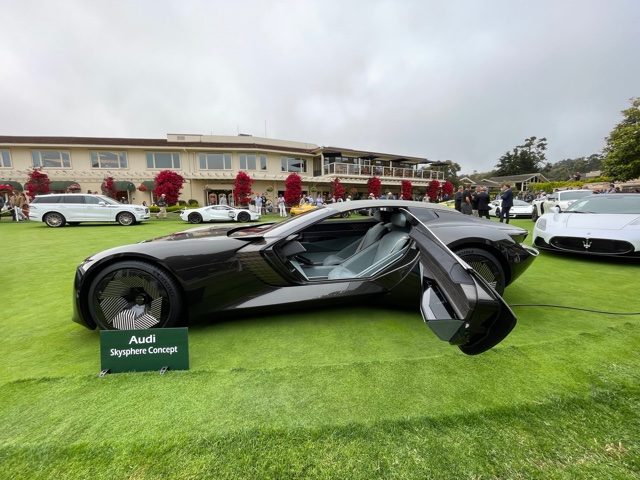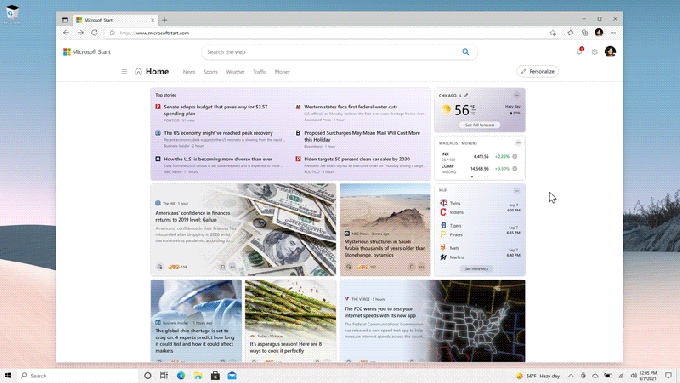- September 7, 2021
- by:
- in: Blog
There are plenty of reasons why Vilnius, Lithuania’s capital city, has an increasingly visible startup sector.
There are plenty of reasons why Vilnius, Lithuania’s capital city, has an increasingly visible startup sector. The country’s startup-friendly regulatory environment, a beautiful medieval town center, over 20 business hubs and accelerators and strong rankings in intellectual property production are most obvious at a high level. But what are the locals excited about on the ground?
Our survey respondents said the city was strong across a broad range of tech industries, particularly those with practical applications: cybersecurity, energy and sustainability, fintech, health care and medtech, edtech and silver tech among others.
Respondents said the effect of the pandemic on working practices would mean that many expats would be moving back to the city, which is affordable, and more foreign companies are relocating there due to favorable government policies, although “rental prices are going through the roof.”
In addition, the oppressive regime in nearby Belarus has provided an influx of significant tech companies, such as Wargaming, as well as the associated talent.
In five years, respondents said the city and country will continue to generate and attract great tech startups, but also tech talent and entrepreneurs. However, one said: “The ecosystem still lacks local funding for the late Series A and beyond rounds.”
We surveyed:
• Gerda Sakalauskaitė, managing director, The Lithuanian Private Equity and Venture Capital Association
• Lukas Inokaitis, business development, NFQ Technologies
• Andrius Milinavicius, founder, Baltic Sandbox
• Gytenis Galkis, partner, 70V
• Gabriele Poteliunaite, associate, Change Ventures
• Rokas Tamošiūnas, partner, Open Circle Capital
• Donatas Keras, founding partner, Practica Capital
• Tomas Martunas, founding partner, Iron Wolf Capital
• Alex Gibb, partner, Katalista Ventures
• Jone Vaituleviciute, partner, Startup Wise Guys
• Lukas Kaminskis, CEO, Turing College
Gerda Sakalauskaitė, managing director, The Lithuanian Private Equity and Venture Capital Association
What industry sectors is your tech ecosystem strong in? What are you most excited by? What is it weak in?
The Vilnius startup ecosystem is mainly dominated by startups developing business management systems (B2B, SaaS) and financial technologies. Vilnius is becoming a solid hot spot of fintech companies in Europe having more than 200 fintech companies established here. Other growing industries would be deep tech, life sciences, mobility, and the game industry.
Which are the most interesting startups in your city?
Vinted (first Lithuanian unicorn, secondhand fashion online marketplace which raised €128 million in an equity funding round, valuing the company at over €1 billion in 2019).
Other notable startups: NordVPN, CGTrader, TransferGo, Trafi, Kilo Health, CityBee, Brolis Semiconductors, PIXEVIA, Oxipit.
Rising stars that also should be looked at: PVcase, Droplet Genomics, ZITICITY.
What are the tech investors like? What is the investment scene like in your city? What’s their focus?
I think local tech investors are taking more risks and becoming global scene players. Investors had their 10 years of market experience and now they are ready to invest into ideas and businesses that would change the global scene or even tackle issues as complex as they come — environmental, biotechnology or deep tech industries. Moreover, the local investor community is quite dynamic. We seek to have our investor landscape as diverse as possible, so we are working toward gender equality in VC and other important diversity causes to accomplish that.
With the shift to remote working during the COVID-19 pandemic, will people stay in your city, move out, or will others move in?
I think COVID-19 created more opportunities for Vilnius than risks in this regard. The coronavirus crisis, in general, hasn’t affected the Vilnius startup ecosystem in the same way as the rest of Europe. In addition, Vilnius has made headlines worldwide with its creative solutions to tackle the pandemic challenges. For instance, Vilnius became one large open air cafe. This shows Vilnius being a quirky, hip and interesting city to live in, so we are expecting more expats to lay their eyes on Vilnius. Especially expats from our Eastern neighbors who are negatively affected by an ongoing political crisis (Belarus).
Who are the key startup people in your city (e.g., investors, founders, lawyers, designers, etc.)?
Founders:
Justas Janauskas, Milda Mitkutė, Mantas Mikuckas (Vinted)
Henrikas Urbonas, Simona Andrijauskaitė (Interactio)
Dalia Lašaite (CGTrader)
Tomas Okmanas, Eimantas Sabaliauskas (Tesonet)
Tadas Burgaila (Kilo Health)
Daumantas Dvilinskas (TransferGo; Forbes 30 under 30)
Martynas Gudonavičius (Trafi)
VC investors:
Rokas Peciulaitis (Contrarian Ventures)
Donatas Keras (Practica Capital), Arvydas Bložė (Practica Capital)
Jone Vaituleviciute, Dmitrij Susunov (Startup Wise Guys)
Kasparas Jurgelionis (Iron Wolf Capital)
Gytenis Galkis (70Ventures)
Viktorija Vaitkevičienė (Coinvest)
Legal experts:
Rūta Armone (Ellex)
Akvilė Bosaite (COBALT Legal)
Eva Suduiko (COBALT Legal)
Mantas Petkevičius (Sorainen)
Laimonas Skibarka (Sorainen)
Linas Sabaliauskas (TRINITI JUREX)
Andrius Ivanauskas (GLIMSTEDT)
Where do you see your city’s tech scene in five years?
Vilnius will definitely gain momentum as the tech startup city of the region. The number of startup people they employ will grow exponentially. We will have one or two extra unicorns born here. And of course quite more foreign talent coming to Vilnius to work in startups!
Lukas Inokaitis, business development, NFQ Technologies
What industry sectors is your tech ecosystem strong in? What are you most excited by? What is it weak in?
Mobility, fintech, energy, cybersecurity, healthcare. Weak in AI, data science.
Which are the most interesting startups in your city?
Vinted, Tesonet, Kilo Health, Pored Banda, Hostinger.
What are the tech investors like? What is the investment scene like in your city? What’s their focus?
Local and with small funds, mostly subsidized by government and EU. Need large private ones and more angel investors.
With the shift to remote working during the COVID-19 pandemic, will people stay in your city, move out, or will others move in?
The city [has been] growing for a decade each year. No reason to slow down as more international talent is moving to Vilnius from other EU and Asian countries.
Where do you see your city’s tech scene in five years?
One-two unicorns every year and leading EU in fintech, mobility and energy.
Andrius Milinavicius, founder, Baltic Sandbox
What industry sectors is your tech ecosystem strong in? What are you most excited by? What is it weak in?
Sustainability, silver tech, women in tech.
Which are the most interesting startups in your city?
Tesonet (NordVPN), Vinted, Traffi, Kilo Health.
What are the tech investors like? What is the investment scene like in your city? What’s their focus?
Deep tech, SaaS, sustainability.
With the shift to remote working during the COVID-19 pandemic, will people stay in your city, move out, or will others move in?
Everyone stays. Vilnius is a very green and vibrant ecosystem, with multiple co-working [locations] and easy access to forests, parks and nearby lakes.
Who are the key startup people in your city (e.g., investors, founders, lawyers, designers, etc.)?
Many of them, starting from Contrarian Ventures — Rokas Peciulaitis, Practica Capital — Arvydas Bloze, continuing to Tesonet co-founder — Tomas Okmanas, Eimantas Sabaliauskas, followed with Kilo Health — Tadas Burgaila and more.
Where do you see your city’s tech scene in five years?
4x at least. Very rapid growth
Help TechCrunch find the best growth marketers for startups.
Provide a recommendation in this quick survey and we’ll share the results with everybody.
Gytenis Galkis, partner, 70V
What industry sectors is your tech ecosystem strong in? What are you most excited by? What is it weak in?
1. Lithuania is now fourth in the global fintech ranking after the U,S,, the U,K, and Singapore.
2. Lithuania’s life sciences sector is gaining prominence.
3. Life sciences companies in Lithuania are among the most profitable in the country, with 90% of their output exported worldwide, yet the market remains unsaturated. Lithuania is 16th in the Global Innovation in Biotechnology ranking according to Scientific American WORLDVIEW international biotechnology ranking 2019.
According to McKinsey study on B2B startups, Lithuania’s B2B startups generate more value per funding than the U.S. and other European counterparts, resulting in the highest capital efficiency in the region!
Which are the most interesting startups in your city?
Larger ones would be: Vinted, Tesonet, Kilo Health, Bored Panda, Brolis Semiconductors, Cujo. Interactio recently has raised a $31 million Series A round — the largest ever Series A for a company headquartered in the Baltics. Upcoming stars: Whatagraph, Ondato, ZITICITY, Eneba, Robolabs, CAST AI, Foros, Billo, Biomatter Designs, #walk15, Boommio.
What are the tech investors like? What is the investment scene like in your city? What’s their focus?
The tech investment ecosystem has been evolving very rapidly during the past five years. The early-stage companies are able to get funding from the Lithuanian Business Angel Network (LitBAN), which unites over 150 active private investors. Coinvest Capital invests along angel investors and provides them lucrative leverage. This is how the Lithuanian government supports the angel ecosystem. Then there are two active accelerators — 70V (Revenue Accelerator) and Startup Wise Guys providing funding in the pre-seed/seed stages. Other local funds — Practica Capital, Iron Wolf Capital, Verslo Angelu Fondas and Open Circle Capital provide seed and Series A funding. The ecosystem still lacks local funding for the late series A and beyond rounds. Most of it is covered by foreign funds. The local ecosystem is too small to have a specific focus. However, I’d say that a lot of focus goes to B2B/enterprise software.
With the shift to remote working during the COVID-19 pandemic, will people stay in your city, move out, or will others move in?
Since 2012 Vilnius’ population has been steadily growing 0.3% every year. I believe that during COVID and events related to Belarus have even further boosted the growth of Vilnius, especially in terms of the tech ecosystem. There had been major moves from Minsk to Vilnius. For example, Wargaming has moved a significant amount of their employees with families to Vilnius and even bought 76 luxury flats in downtown Vilnius. Other Belarusian companies are following. Furthermore, Vilnius is one of the greenest capitals in Europe with a unique medieval old town, which makes it one of the coziest places to live. It is estimated that Lithuania still lacks over 10,000 tech talents, which could be a great opportunity for savvy explorers to join the rapidly growing tech scene!
Who are the key startup people in your city (e.g., investors, founders, lawyers, designers, etc.)?
Vilnius is a small town and it is well connected, there are a lot of people that made this ecosystem flourish. Just to name a few: Jean-Baptiste Daguenè, Donatas Keras, Mantas Mikuckas, Tomas Okmanas, Rita Sakus, Vladas Lašas, Viktorija Vaitkevičienė, Tomas Martunas, Dmitrij Sosunov, Evaldas Remeikis, Evaldas Petraitis, and many more that I should mention.
Where do you see your city’s tech scene in five years?
I strongly believe that Vilnius will further expand on its unique angle of tech entrepreneurship. I strongly estimate further growth in fintech, life sciences and B2B ecosystem. In my vision, I believe exports driven by Lithuanian startups will at least double within the next five years while bringing a few new unicorns.
Gabriele Poteliunaite, associate, Change Ventures
What industry sectors is your tech ecosystem strong in? What are you most excited by? What is it weak in?
Well, probably most people will give the same answer, but Vilnius is huge on fintech. However, I would also go on to highlight other prospering sectors, such as edtech, AI-driven companies, medtech, energy tech — you name it … There are numerous sectors that we are quite strong in. As a generalist investor, we are mostly excited about driven and passionate founders. This brings me to another point that I would say the weakest link of the ecosystem is lack of entrepreneurial training and lack of educational initiatives inspiring youngsters (and not only) to go on to found their own companies and take risks. Risk aversiveness is the key weakness here. We are still lacking huge success stories, but this is slowly changing (Vinted, Tesonet).
Which are the most interesting startups in your city?
Interactio, Vinted, Memby and so many others — could go on listing them for days.
What are the tech investors like? What is the investment scene like in your city? What’s their focus?
As it is a very tight-knit community, local tech investors are very collaborative and helpful with each other and entrepreneurs. However, I would say the main areas local investors still need to improve on is internationalizing and diversifying their investment teams (it’s 2021 already) and discouraging founders to be aggressive in their expansion to foreign markets and thinking globally very early on. Most investors are generalists, focusing on all three Baltic countries and doing mostly seed investments in software (some hardware) B2B companies.
With the shift to remote working during the COVID-19 pandemic, will people stay in your city, move out, or will others move in?
STAY and MOVE IN — no question there! I think COVID-19 pandemic has been a great stimulus for most expats — including myself, to move back to Vilnius and join forces in building this flourishing ecosystem. As far as I can tell, most people will stay, (rental prices are going through the roof) and more foreign companies are relocating here due to very favorable policies.
Who are the key startup people in your city (e.g., investors, founders, lawyers, designers, etc.)?
Ugh, so many great people to highlight … which is obviously a sign that Vilnius has simply an overwhelming number of absolute stars! (Not a biased opinion obviously.)
Where do you see your city’s tech scene in five years?
I would venture to say something as daring as Vilnius becoming the global leader in generating and attracting not only world-class tech startups, but also tech talent and outstanding entrepreneurs. I might be getting a tad too excited, but I see so much authenticity in this region — and if we manage to cherish it, we may go really far!
Rokas Tamošiūnas, partner, Open Circle Capital
What industry sectors is your tech ecosystem strong in? What are you most excited by? What is it weak in?
Strong: Marketplaces, fintech, life sciences, tech diversity (prop, fin, gov, mobility, AI). Weak: Internationalization, sales, marketing.
Which are the most interesting startups in your city?
Vinted, Tesonet, Traffi, Omnisend, Billo, Whatagraph.
What are the tech investors like? What is the investment scene like in your city? What’s their focus?
We have some generalists (Practica Capital), deep tech (Open Circle Capital and Iron Wolf Capital), green/energy (Contrarian Ventures) and accelerators (70ventures and Startup Wise Guys).
Investors are still early pre-seed/seed but are gradually maturing up. ICT (especially AI) still dominates, but other areas, such as photonics (lasers), new space and others.
With the shift to remote working during the COVID-19 pandemic, will people stay in your city, move out, or will others move in?
Gradually everyone moved to full remove in the tech community. Now people are back in offices (and mostly enjoying it), but I think most companies will do a mixed model from now on. Remote working did a lot of good in recognizing virtual teams and especially teams that have members based in different countries.
Who are the key startup people in your city (e.g., investors, founders, lawyers, designers, etc.)?
Top are startup founders like J. Janauskas from Vinted, T. Okman from Tesonet, R. Lauris from Omnisend.
Where do you see your city’s tech scene in five years?
We are going on a patch of diversity — dozens of microecosystems of different tech. I think we will have a very colorful scene in a few years.
Donatas Keras, founding partner, Practica Capital
What industry sectors is your tech ecosystem strong in? What are you most excited by? What is it weak in?
As our young tech ecosystem matures, we can see an increasing number of startups from different industry sectors that are founded and headquartered in Vilnius are becoming global leaders in their categories. If we look more closely at specific industries, I would highlight:
Marketplaces (Vinted, CGTrader, Ovoko); cybersecurity (NordVPN); fintech (TransferGo, Ondato, Revolut EU headquarters); gaming (Nordcurrent, Game Insight, Wargaming); mobility (Trafi, ZITICITY); biotechnology (Biomatter Designs, Droplet Genomics); space (NanoAvionics); health tech (Kilo Health, Oxipit).
The strengths of our tech ecosystem are the fast growth of startups, global first mindset, seek for innovation and the resilience of the founders. And these are some of the things that excite me as an investor. Of course, with such fast growth, we can already see increasing competition for local talent. That can be considered as a weakness, which should be addressed right now at the state level.
Which are the most interesting startups in your city?
The most notable startups are – Vinted (The first Lithuanian unicorn), NordVPN, CGTrader, Interactio, TransferGo, Trafi, Kilo Health, CarVertical, Omnisend and many more. But I would also like to mention some of the rising stars that we should not overlook: Ondato, Ovoko, Biomatter Designs, Droplet Genomics, ZITICITY.
What are the tech investors like? What is the investment scene like in your city? What’s their focus?
The investment scene shows the same signs of maturing as the whole ecosystem. And that is noticeable at all investment stages. It seems that now we are starting to “pick the fruits” of 10 years of hard work — companies becoming much more fundable, and investors tend to take risks and are more ready to do so. Business angels are becoming more active than ever, with 100+ deals made per year. And if a few years back the majority were experienced entrepreneurs of the so-called “old economy,” now an increasing number of tech entrepreneurs are picking up and investing in new startups at the very early stage. Business accelerators and pre-seed funds also playing an important role in the development of the ecosystem. They are mostly backed by the government and became very active in the last 3-4 years. Most notable: 70ventures, Startup Wise Guys, Baltic Sandbox.
Venture capital has around 10+ years of history in Vilnius and Lithuania. First, it was stimulated by EIF and the state money, now it’s picking up strongly and plays a crucial role in startups development at an early stage.
Most notable VCs:
Practica Capital is one of the most experienced and most active VCs in Vilnius and the whole region. With 10+ years of history, it grew together with the ecosystem, startups and the founders right from the start. The most notable deals are — Interactio, TransferGo, CGTrader, Trafi, Eneba, PVcase. The team has a high level of know-how and proven record in fintech, mobility, SaaS, marketplaces.
Open Circle Capital and Iron Wolf Capital are first-time funds, both active and doing a good job.
Contrarian Ventures is a small but active “green” tech-focused VC making a noticeable mark in the development of the ecosystem too.
Regional and international colleagues are also present at the events and co-investing quite actively with local investors (Karma Ventures, Trind VC, Change Ventures, Tera VC, ZGI and global powerhouses such as Intel, Accel, Creandum, Insight Venture Partners, Inreach).
Most of the VCs are generalists and looking into a broad spectrum of startups active in different sectors, with a few exceptions. Of course, some of the investors have a better-proven record in some categories than others.
With the shift to remote working during the COVID-19 pandemic, will people stay in your city, move out, or will others move in?
Lithuania is a small country, and Vilnius being the capital city, is still the center of attraction of everything in the country, and talent is not an exception. With further development and growth of the tech ecosystem, even more talent will be drawn to Vilnius. It is a great city to live in, work and build global tech companies.
Where do you see your city’s tech scene in five years?
We will have more than five unicorns born/raised here, and Vilnius will become one of the European “hot spots” for tech investing. The tech ecosystem will grow at least three times. Vilnius will become a center of attraction for talent from all the region, CIS and other parts of Europe.
Tomas Martunas, founding partner, Iron Wolf Capital
What industry sectors is your tech ecosystem strong in? What are you most excited by? What is it weak in?
Lithuania, and especially Vilnius, has established a very strong position in fintech being the No. 4 in Global Fintech Ranking. Vilnius has created a favorable environment for fintech startups to be established and developed, and managed to attract one of the largest fintech players, Revolut. Vilnius is also especially advanced in the laser industry. While lasers constitute only a small part of Lithuania’s export, their quality is making the country famous around the world. It is very exciting as the demand for lasers is forecasted to only increase. We believe that Lithuania’s laser industry has a very positive outlook and thus, we invested in laser manufacturer Litilit. Vilnius also boasts many strong SaaS startups with, for example, Interactio, which recently raised $30 million after seeing 12x growth between 2019 and 2020. I believe there is still a lot of untapped potential in deep tech and edtech in the Vilnius ecosystem and it is starting to uncover. With the Wargaming office opening, also together with the Unity branch, Game Insights office and independent game studios, the gaming cluster has good fundamentals to blossom.
Which are the most interesting startups in your city?
Vinted, Tesonet, Turing College, Omnisend, Millo Appliances, NanoAvionics, Pixevia, Monimoto, Redtrack.io, Interactio, Litilit, Foros.
What are the tech investors like? What is the investment scene like in your city? What’s their focus?
First, there are significant sums of EU funding available for early-stage startups, especially for the ones having a strong technical foundation and innovative solutions. Overall, the Vilnius ecosystem has grown significantly over the past five years with many more VCs being established, a strong business angels network (LitBAN), accelerators launched and more focus dedicated to early stage and bolder investment ideas.
Many investors remain focused on the Baltics and CEE and still have some way to go to establish more global mindsets that are more prevalent in Nordics and Western Europe. But the Vilnius ecosystem is still growing and more foreign investors entering shows the attractiveness of the ecosystem in this way also providing founders with more opportunities.
With the shift to remote working during the COVID-19 pandemic, will people stay in your city, move out, or will others move in?
Vilnius is a very attractive destination. It boasts affordable housing (which many European capitals cannot offer), and when COVID-19 is reshaping our lives to remote work becoming a standard, many people will move out of expensive cities to more affordable ones, such as Vilnius. Also, it is an innovative city that has advanced a lot to easily compare with other European capitals (and overtake some of them) in terms of standard of living and career opportunities.
Who are the key startup people in your city (e.g., investors, founders, lawyers, designers, etc.)?
Mantas Mikuckas, Tomas Okmanas, Eimantas Sabaliauskas, Toma Sabaliauskiene, Rytis Lauris, Vladas Lašas, Rita Sakus, Tadas Burgaila, Inga Langaitė, Roberta Rudokiene and of course Iron Wolf Capital founders 😉
Where do you see your city’s tech scene in five years?
I believe that Vilnius will continue on growing and advancing to become one of the key European startup hubs. With favorable business conditions and a good standard of living it is expected to attract more talents who will contribute to fostering the ecosystem. However, Lithuania is already experiencing a brain drain and should take some special efforts to bring talents back and retain them.
Alex Gibb, partner, Katalista Ventures
What industry sectors is your tech ecosystem strong in? What are you most excited by? What is it weak in?
We’ve seen an explosion of companies offshoring from Scandinavia over the past 10+ years in LT, which has led to the growth of competence centers and specialist R&D facilities for intangible services. I’m excited by the tech sector’s growth, which is primarily software, development and engineering. We’re too small to really have specific sectors but lasers have a trusted pedigree in LT.
Which are the most interesting startups in your city?
Cogastro is servicing insect farms with CRM systems — that’s pretty original and niche! Bored Panda was No. 1 on the App Store last year and continues to boom, Tinggly (disclosure — I’m a co-founder) is growing again rapidly after COVID, serving the U.S. market primarily. Vinted is of course head and shoulders above the others — both in valuation terms, but also the positive impact on recycling and reusing.
What are the tech investors like? What is the investment scene like in your city? What’s their focus?
We have a growing angel network with LitBAN that is boosted by the government’s co-invest fund — which recently facilitated a 34x return for early investors in Interactio. There is a good range of early-stage VCs in town, the gap comes in the 2 million+ space where startups need to go abroad for deeper pockets. The focus tends to be B2B but as we’re a small geography there are very few investors with a tight sector focus.
With the shift to remote working during the COVID-19 pandemic, will people stay in your city, move out, or will others move in?
Move in! Vilnius is a compact and cool city [with a] high quality of life here and [it’s] easy to get out to the lakes and forests to relax. I still think we’re figuring out the hybrid nature of work from here onward, so people will mix and match to what suits their lifestyles. The positive shift is more power to employees and employers taking into account what employees need for positive mental health.
Who are the key startup people in your city (e.g., investors, founders, lawyers, designers, etc.)?
Greta Monstavice, CEO at Katalista Ventures — she’s top of the tree on all things sustainability related and passionate about empowering startups. JB Daguené at 70V is powering B2B startups with explosive growth tools. Sarune Smalakyte, head of Rockit, is nurturing fintech companies at their co-working space and blasting out many great (free) events for the community.
Where do you see your city’s tech scene in five years?
I’m excited about the city’s prospects. We have a lot ahead of us with many new startups coming through. The key challenge will be to get the next generation of tech talent trained properly and ready for the demands of an already squeezed workforce.
Jone Vaituleviciute, partner, Startup Wise Guys
What industry sectors is your tech ecosystem strong in? What are you most excited by? What is it weak in?
Vilnius is of course known on a global scale for its fintech ecosystem — though the majority of fintech “perks” come on a governmental/country level, Vilnius boasts a high number of banking, insurance and other financial services professionals, as well as fintech-focused startup hubs and a number of events. I am particularly excited to see a number of big foreign names (e.g., Revolut, SumUp and many other) moving their operations here; this way building up the ecosystem and level of fintech professionals. Gaming, edtech are also a few other up-and-coming areas, which signals that B2C is becoming more usual than not. On the improvement side, we still have not figured out how to include deep tech/R&D startups into the ecosystem and funding mechanisms. This is a challenge many cities have, but we hope Vilnius will move to the right direction, thanks to collaborations among universities and venture capital funds.
Which are the most interesting startups in your city?
Well-known names: Vinted, Trafi, TransferGo and several not backed by venture capital — Bored Panda, Kilo Health.
Up-and-coming: ZITICITY (mobility), kevin. (fintech), Ondato (fintech), Turing College (edtech).
What are the tech investors like? What is the investment scene like in your city? What’s their focus?
Vilnius is a good representation of all Baltic venture capital ecosystems. We have several pre-seed/seed stage venture capital funds that are coming in with experience and good understanding of various verticals. However, for a long time we lacked a proper early-stage funding ecosystem. This is changing right now with accelerators supporting idea-stage startups and a number of business angels appearing from successful startups who are ready to invest decent tickets resembling more Western Europe rather than Baltic funding trends.
With the shift to remote working during the COVID-19 pandemic, will people stay in your city, move out, or will others move in?
I believe the pandemic has been rather favorable for small ecosystems like Vilnius. Mainly because remote investing/pitching/selling became an absolute norm and founders do not have to fly hundreds of miles for an event or a meeting to close a deal. Thus, I see many entrepreneurs sticking to Vilnius due to its great life quality and well-knitted ecosystem.
Where do you see your city’s tech scene in five years?
We should be talking pre-seed/seed on the same level as West Europe or even the U.S. We are catching up with the standard, but with the maturity of the venture capital ecosystem, Vilnius should be a perfect city to kick-start your startup and take it to Series A with the same funding available. We should see more areas like fintech emerging with strong value proposition for foreign companies as well as initiatives for local ones to stay. Talent will be expensive, but this is how it should be. Second- and third-time founders will be creating more and more startups that will attract a number of foreign funds too.
Lukas Kaminskis, CEO, Turing College
What industry sectors is your tech ecosystem strong in? What are you most excited by? What is it weak in?
Vilnius is well known for its fintech and blockchain ecosystems — companies such as Revolut have banking licenses registered here in Vilnius. We have several strong players in medtech and cybersecurity — Kilo Health and Nord Security — which are growing super fast. Nevertheless, we’re lacking behind with education. Explicitly speaking, most IT programs in Lithuanian universities aren’t focused on preparing students for international competition. This is why a lot of companies are establishing their internal academies to upskill students from universities.
Which are the most interesting startups in your city?
Omnisend, Nord Security, Attention Insight, Turing College.
What are the tech investors like? What is the investment scene like in your city? What’s their focus?
Lithuania has quite a good pre-seed/seed investment scene with investors like Iron Wolf Capital, Startup Wise Guys, Practica Capital, etc. Moreover, there is a VC fund — Co-invest Fund, which invests the sum equivalent to the multiplier of any accredited angel investor’s investment sum by 3x-5x. Investors in Lithuania are mostly industry agnostic.
With the shift to remote working during the COVID-19 pandemic, will people stay in your city, move out, or will others move in?
Tendencies in Lithuania are quite similar to the ones we see in the global scene. Companies plan to adapt hybrid type of work post-COVID, while maintaining remote type of work as primary while the pandemic is happening.
Who are the key startup people in your city (e.g., investors, founders, lawyers, designers, etc.)?
Giedrius Kolesnikovas is the guy to know from the legal industry — he is the partner of Motieka & Audzevicius legal firm. From the investor’s perspective, there are several of them — Jone Vaituleviciute, Rytis Vitkauskas, Kasparas Jurgelionis and Arvydas Bložė. These guys can open doors to most of European/U.S. capitals.
Where do you see your city’s tech scene in five years?
I see that Vilnius will become a tech talent center of Northern Europe. Edtech startups and private training initiatives are emerging in our market to solve educational problems that we face because of the poor performance of public education policies in the last 20 years. As well, I see that the current government is making a huge effort to attract international tech companies to establish their branches here in Lithuania. Great examples are Wargaming, Moody’s, which established huge centers here in Lithuania.











